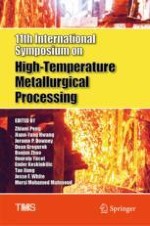2020 | Buch
11th International Symposium on High-Temperature Metallurgical Processing
herausgegeben von: Dr. Zhiwei Peng, Prof. Jiann-Yang Hwang, Prof. Jerome P. Downey, Dr. Dean Gregurek, Prof. Dr. Baojun Zhao, Prof. Dr. Onuralp Yücel, Prof. Dr. Ender Keskinkilic, Tao Jiang, Dr. Jesse F. White, Dr. Morsi Mohamed Mahmoud
Verlag: Springer International Publishing
Buchreihe : The Minerals, Metals & Materials Series
